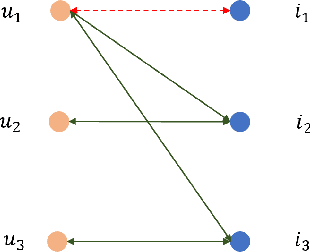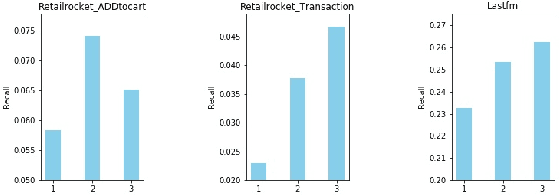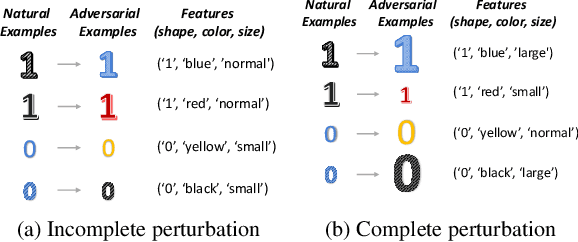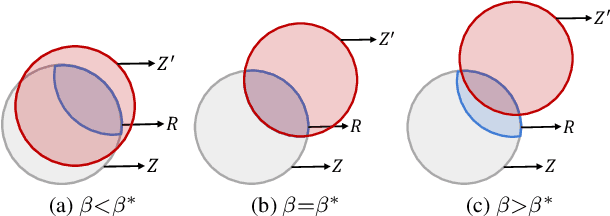Ning Yang
Denoised Recommendation Model with Collaborative Signal Decoupling
Nov 06, 2025



Abstract:Although the collaborative filtering (CF) algorithm has achieved remarkable performance in recommendation systems, it suffers from suboptimal recommendation performance due to noise in the user-item interaction matrix. Numerous noise-removal studies have improved recommendation models, but most existing approaches conduct denoising on a single graph. This may cause attenuation of collaborative signals: removing edges between two nodes can interrupt paths between other nodes, weakening path-dependent collaborative information. To address these limitations, this study proposes a novel GNN-based CF model called DRCSD for denoising unstable interactions. DRCSD includes two core modules: a collaborative signal decoupling module (decomposes signals into distinct orders by structural characteristics) and an order-wise denoising module (performs targeted denoising on each order). Additionally, the information aggregation mechanism of traditional GNN-based CF models is modified to avoid cross-order signal interference until the final pooling operation. Extensive experiments on three public real-world datasets show that DRCSD has superior robustness against unstable interactions and achieves statistically significant performance improvements in recommendation accuracy metrics compared to state-of-the-art baseline models.
ASCoT: An Adaptive Self-Correction Chain-of-Thought Method for Late-Stage Fragility in LLMs
Aug 07, 2025



Abstract:Chain-of-Thought (CoT) prompting has significantly advanced the reasoning capabilities of Large Language Models (LLMs), yet the reliability of these reasoning chains remains a critical challenge. A widely held "cascading failure" hypothesis suggests that errors are most detrimental when they occur early in the reasoning process. This paper challenges that assumption through systematic error-injection experiments, revealing a counter-intuitive phenomenon we term "Late-Stage Fragility": errors introduced in the later stages of a CoT chain are significantly more likely to corrupt the final answer than identical errors made at the beginning. To address this specific vulnerability, we introduce the Adaptive Self-Correction Chain-of-Thought (ASCoT) method. ASCoT employs a modular pipeline in which an Adaptive Verification Manager (AVM) operates first, followed by the Multi-Perspective Self-Correction Engine (MSCE). The AVM leverages a Positional Impact Score function I(k) that assigns different weights based on the position within the reasoning chains, addressing the Late-Stage Fragility issue by identifying and prioritizing high-risk, late-stage steps. Once these critical steps are identified, the MSCE applies robust, dual-path correction specifically to the failure parts. Extensive experiments on benchmarks such as GSM8K and MATH demonstrate that ASCoT achieves outstanding accuracy, outperforming strong baselines, including standard CoT. Our work underscores the importance of diagnosing specific failure modes in LLM reasoning and advocates for a shift from uniform verification strategies to adaptive, vulnerability-aware correction mechanisms.
XRoboToolkit: A Cross-Platform Framework for Robot Teleoperation
Jul 31, 2025



Abstract:The rapid advancement of Vision-Language-Action models has created an urgent need for large-scale, high-quality robot demonstration datasets. Although teleoperation is the predominant method for data collection, current approaches suffer from limited scalability, complex setup procedures, and suboptimal data quality. This paper presents XRoboToolkit, a cross-platform framework for extended reality based robot teleoperation built on the OpenXR standard. The system features low-latency stereoscopic visual feedback, optimization-based inverse kinematics, and support for diverse tracking modalities including head, controller, hand, and auxiliary motion trackers. XRoboToolkit's modular architecture enables seamless integration across robotic platforms and simulation environments, spanning precision manipulators, mobile robots, and dexterous hands. We demonstrate the framework's effectiveness through precision manipulation tasks and validate data quality by training VLA models that exhibit robust autonomous performance.
Enhancing Efficiency and Propulsion in Bio-mimetic Robotic Fish through End-to-End Deep Reinforcement Learning
Jun 05, 2025Abstract:Aquatic organisms are known for their ability to generate efficient propulsion with low energy expenditure. While existing research has sought to leverage bio-inspired structures to reduce energy costs in underwater robotics, the crucial role of control policies in enhancing efficiency has often been overlooked. In this study, we optimize the motion of a bio-mimetic robotic fish using deep reinforcement learning (DRL) to maximize propulsion efficiency and minimize energy consumption. Our novel DRL approach incorporates extended pressure perception, a transformer model processing sequences of observations, and a policy transfer scheme. Notably, significantly improved training stability and speed within our approach allow for end-to-end training of the robotic fish. This enables agiler responses to hydrodynamic environments and possesses greater optimization potential compared to pre-defined motion pattern controls. Our experiments are conducted on a serially connected rigid robotic fish in a free stream with a Reynolds number of 6000 using computational fluid dynamics (CFD) simulations. The DRL-trained policies yield impressive results, demonstrating both high efficiency and propulsion. The policies also showcase the agent's embodiment, skillfully utilizing its body structure and engaging with surrounding fluid dynamics, as revealed through flow analysis. This study provides valuable insights into the bio-mimetic underwater robots optimization through DRL training, capitalizing on their structural advantages, and ultimately contributing to more efficient underwater propulsion systems.
DASH: Input-Aware Dynamic Layer Skipping for Efficient LLM Inference with Markov Decision Policies
May 23, 2025



Abstract:Large language models (LLMs) have achieved remarkable performance across a wide range of NLP tasks. However, their substantial inference cost poses a major barrier to real-world deployment, especially in latency-sensitive scenarios. To address this challenge, we propose \textbf{DASH}, an adaptive layer-skipping framework that dynamically selects computation paths conditioned on input characteristics. We model the skipping process as a Markov Decision Process (MDP), enabling fine-grained token-level decisions based on intermediate representations. To mitigate potential performance degradation caused by skipping, we introduce a lightweight compensation mechanism that injects differential rewards into the decision process. Furthermore, we design an asynchronous execution strategy that overlaps layer computation with policy evaluation to minimize runtime overhead. Experiments on multiple LLM architectures and NLP benchmarks show that our method achieves significant inference acceleration while maintaining competitive task performance, outperforming existing methods.
Negative Metric Learning for Graphs
May 15, 2025Abstract:Graph contrastive learning (GCL) often suffers from false negatives, which degrades the performance on downstream tasks. The existing methods addressing the false negative issue usually rely on human prior knowledge, still leading GCL to suboptimal results. In this paper, we propose a novel Negative Metric Learning (NML) enhanced GCL (NML-GCL). NML-GCL employs a learnable Negative Metric Network (NMN) to build a negative metric space, in which false negatives can be distinguished better from true negatives based on their distance to anchor node. To overcome the lack of explicit supervision signals for NML, we propose a joint training scheme with bi-level optimization objective, which implicitly utilizes the self-supervision signals to iteratively optimize the encoder and the negative metric network. The solid theoretical analysis and the extensive experiments conducted on widely used benchmarks verify the superiority of the proposed method.
Learn to Swim: Data-Driven LSTM Hydrodynamic Model for Quadruped Robot Gait Optimization
May 06, 2025



Abstract:This paper presents a Long Short-Term Memory network-based Fluid Experiment Data-Driven model (FED-LSTM) for predicting unsteady, nonlinear hydrodynamic forces on the underwater quadruped robot we constructed. Trained on experimental data from leg force and body drag tests conducted in both a recirculating water tank and a towing tank, FED-LSTM outperforms traditional Empirical Formulas (EF) commonly used for flow prediction over flat surfaces. The model demonstrates superior accuracy and adaptability in capturing complex fluid dynamics, particularly in straight-line and turning-gait optimizations via the NSGA-II algorithm. FED-LSTM reduces deflection errors during straight-line swimming and improves turn times without increasing the turning radius. Hardware experiments further validate the model's precision and stability over EF. This approach provides a robust framework for enhancing the swimming performance of legged robots, laying the groundwork for future advances in underwater robotic locomotion.
TW-CRL: Time-Weighted Contrastive Reward Learning for Efficient Inverse Reinforcement Learning
Apr 08, 2025Abstract:Episodic tasks in Reinforcement Learning (RL) often pose challenges due to sparse reward signals and high-dimensional state spaces, which hinder efficient learning. Additionally, these tasks often feature hidden "trap states" -- irreversible failures that prevent task completion but do not provide explicit negative rewards to guide agents away from repeated errors. To address these issues, we propose Time-Weighted Contrastive Reward Learning (TW-CRL), an Inverse Reinforcement Learning (IRL) framework that leverages both successful and failed demonstrations. By incorporating temporal information, TW-CRL learns a dense reward function that identifies critical states associated with success or failure. This approach not only enables agents to avoid trap states but also encourages meaningful exploration beyond simple imitation of expert trajectories. Empirical evaluations on navigation tasks and robotic manipulation benchmarks demonstrate that TW-CRL surpasses state-of-the-art methods, achieving improved efficiency and robustness.
Weakly Supervised Contrastive Adversarial Training for Learning Robust Features from Semi-supervised Data
Mar 14, 2025



Abstract:Existing adversarial training (AT) methods often suffer from incomplete perturbation, meaning that not all non-robust features are perturbed when generating adversarial examples (AEs). This results in residual correlations between non-robust features and labels, leading to suboptimal learning of robust features. However, achieving complete perturbation, i.e., perturbing as many non-robust features as possible, is challenging due to the difficulty in distinguishing robust and non-robust features and the sparsity of labeled data. To address these challenges, we propose a novel approach called Weakly Supervised Contrastive Adversarial Training (WSCAT). WSCAT ensures complete perturbation for improved learning of robust features by disrupting correlations between non-robust features and labels through complete AE generation over partially labeled data, grounded in information theory. Extensive theoretical analysis and comprehensive experiments on widely adopted benchmarks validate the superiority of WSCAT.
ARIES: Stimulating Self-Refinement of Large Language Models by Iterative Preference Optimization
Feb 08, 2025Abstract:A truly intelligent Large Language Model (LLM) should be capable of correcting errors in its responses through external interactions. However, even the most advanced models often face challenges in improving their outputs. In this paper, we explore how to cultivate LLMs with the self-refinement capability through iterative preference training, and how this ability can be leveraged to improve model performance during inference. To this end, we introduce a novel post-training and inference framework, called ARIES: Adaptive Refinement and Iterative Enhancement Structure. This method iteratively performs preference training and self-refinement-based data collection. During training, ARIES strengthen the model's direct question-answering capability while simultaneously unlocking its self-refinement potential. During inference, ARIES harnesses this self-refinement capability to generate a series of progressively refined responses, which are then filtered using either the Reward Model Scoring or a simple yet effective Rule-Based Selection mechanism, specifically tailored to our approach, to construct a dataset for the next round of preference training. Experimental results demonstrate the remarkable performance of ARIES. When applied to the Llama-3.1-8B model and under the self-refinement setting, ARIES surpasses powerful models such as GPT-4o, achieving 62.3% length-controlled (LC) and a 63.3% raw win rates on AlpacaEval 2, outperforming Iterative DPO by 27.8% and 35.5% respectively, as well as a 50.3% win rate on Arena-Hard, surpassing Iterative DPO by 26.6%. Furthermore, ARIES consistently enhances performance on mathematical reasoning tasks like GSM8K and MATH.
 Add to Chrome
Add to Chrome Add to Firefox
Add to Firefox Add to Edge
Add to Edge